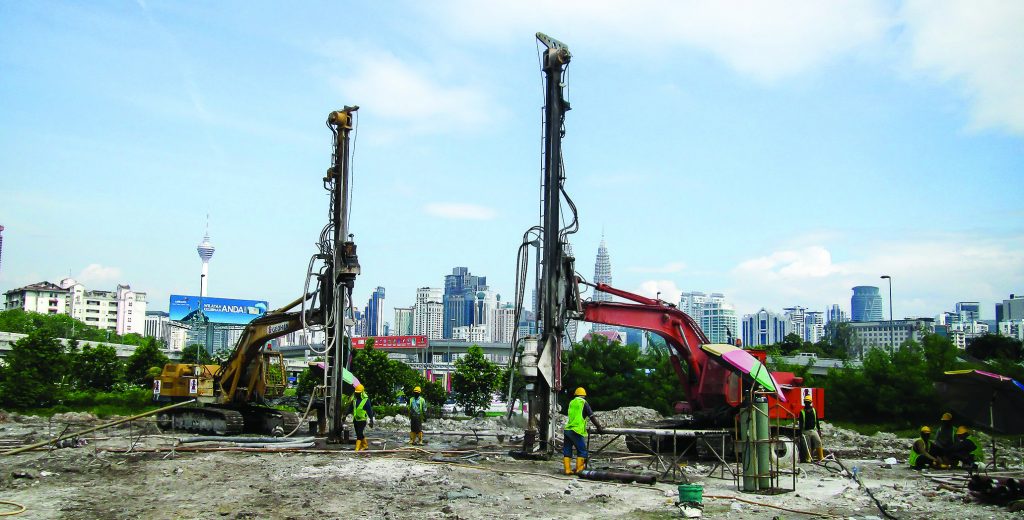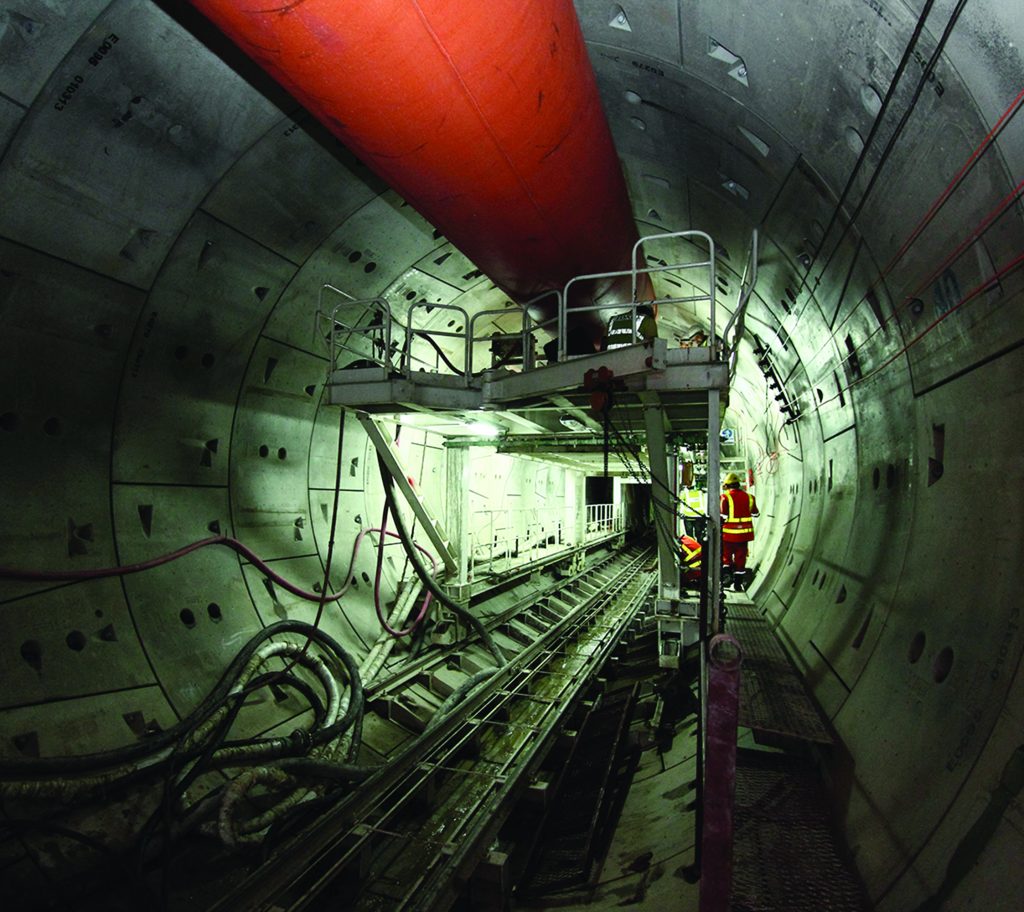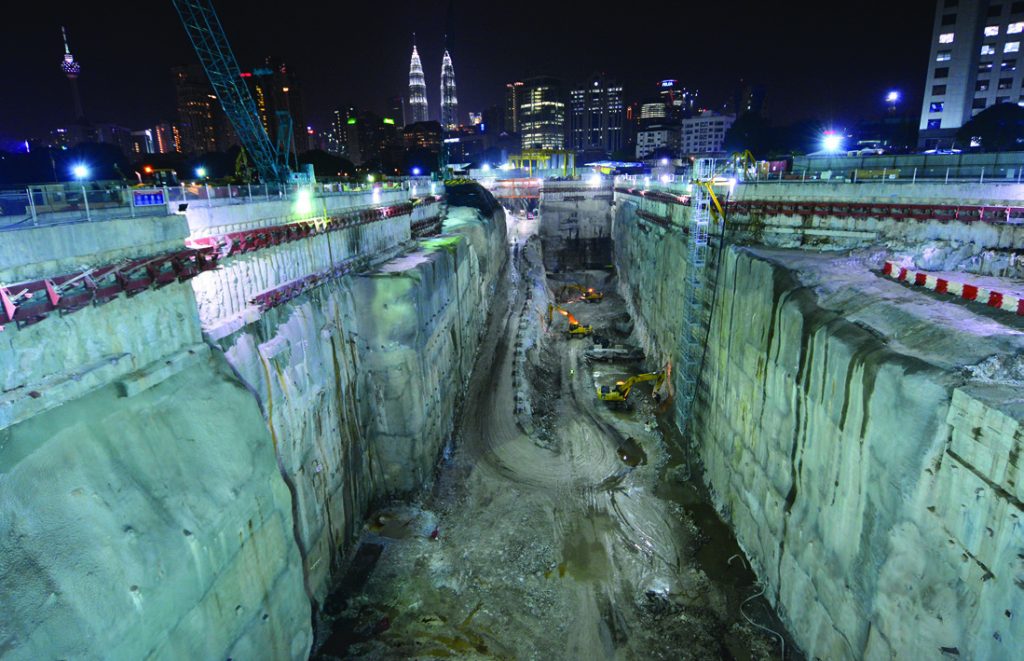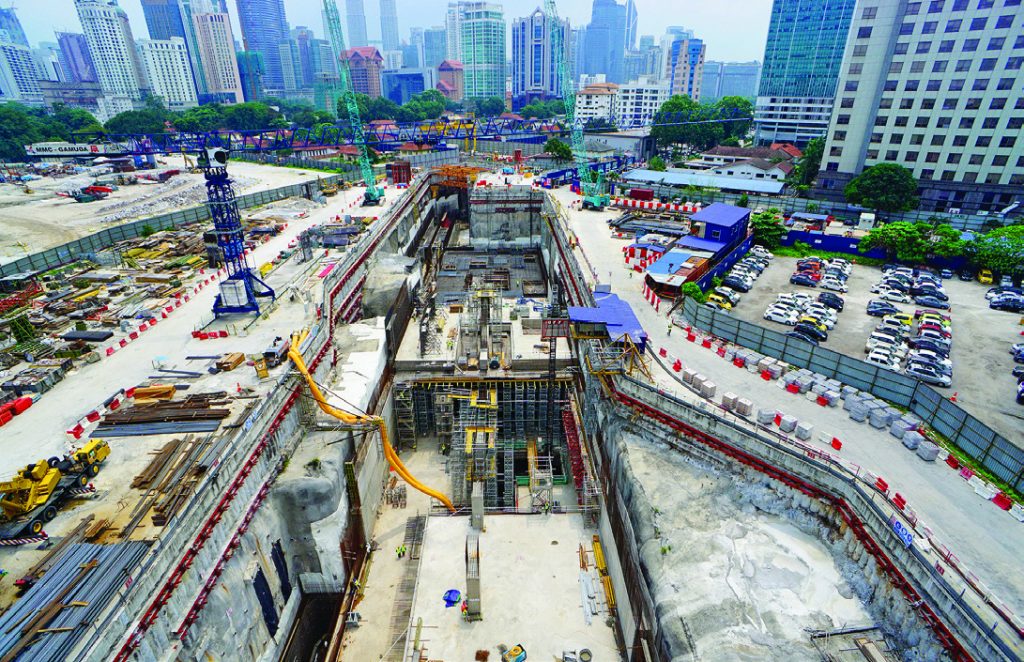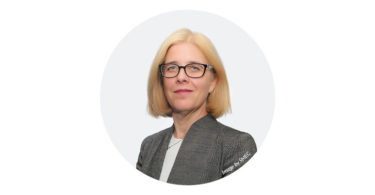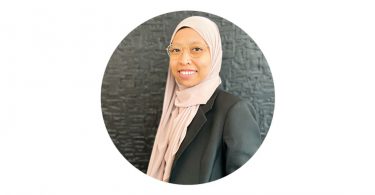Ir Dr Ooi Lean Hock holds a PhD in geotechnical engineering from the University of Sydney, Australia. In the past, he has served in various capacities in the Institution of Engineers, Malaysia Council and Geotechnical Technical Division, and the Malaysian Site Investigators Association. He is currently seconded from Gamuda Bhd to KVMRT (T) Sdn Bhd as the lead geotechnical of one of the biggest infrastructure projects in the country.
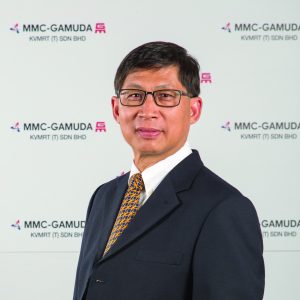 The 51-kilometre Klang Valley Mass Rapid Transit (KVMRT) Sungai Buloh–Kajang (SBK) line, which opened on July 17, 2017, has 31 stations in total—seven of which are underground, located along a stretch of 9.5 kilometres under the city’s central business district. On average, the tunnels run about 30 metres below ground, with the Tun Razak Exchange (TRX) station 40 metres deep (equivalent to about a 13-storey basement carpark).
The 51-kilometre Klang Valley Mass Rapid Transit (KVMRT) Sungai Buloh–Kajang (SBK) line, which opened on July 17, 2017, has 31 stations in total—seven of which are underground, located along a stretch of 9.5 kilometres under the city’s central business district. On average, the tunnels run about 30 metres below ground, with the Tun Razak Exchange (TRX) station 40 metres deep (equivalent to about a 13-storey basement carpark).
While many commuters will now benefit from the new connectivity and enjoy the designer stations (check out the Sungai Buloh–Kajang (SBK) MRT Line: Underground Works), what may be less apparent are the challenges involved in venturing so deep in the ground, right in the heart of the city.
Ooi sheds some light on that aspect and shares his experiences with Construction+ Malaysia.
What was one of the main challenges in building the underground SBK line?
Ground risk is the biggest challenge as it has so many variables. The MRT Line 1 (the SBK line) runs through two distinctly different types of ground—the Kenny Hill Formation, which comprises metamorphosed sedimentary rocks of predominantly interbedded phyllite and quartzite or its weathered derivatives, and the Kuala Lumpur Limestone Formation, which has highly developed complex karst.
Tunnelling in karsts can be complicated and unpredictable as they have highly variable bedrock profiles and intricate networks of channels and cavities, often filled with groundwater that needs to be kept in equilibrium. Leakages of slurry through these solution channels can cause the tunnel-boring machine (TBM) to lose working pressure, while the escape of pressurised slurry or air to the surface can lead to ground collapses and sinkholes.
The Stormwater Management and Road Tunnel (SMART) project, which opened in 2007, involved tunnelling in kasrt. How did that experience help in this KVMRT project?
The SMART tunnel was the first time we did major tunnelling almost entirely in limestone. It was also our first experience using a slurry machine, the then-known best tunnelling machine available. We encountered many problems, such as sinkholes and slurry blow outs, but we learnt from those experiences and applied them in this project.
For example, we developed a new TBM, called the variable density TBM, which comes with four different modes to handle the complex karsts, successfully mitigating karsts-related challenges, reducing incidents and meeting timely delivery.
Can you give us some idea of the ground works that were done in preparation for the KVMRT Line 1 tunnelling?
We carried out initial geological studies since 2006 with preliminary soil sampling, with 69 bore holes and geophysical surveys. Additional ground investigation, with more than 400 bore holes, was carried out during the detailed design and early construction stages.
For limestone sites, we drilled to depths of 10 to 20 metres below the final excavation level of the stations. Our team collected core samples to assess rock quality, weathering conditions and fracture states.
However, it would not be practical to put in as many boreholes throughout the entire tunnel alignment, especially in an urban environment such as Kuala Lumpur. Hence, we conducted various geophysical surveys—such as multichannel analysis of surface wave, electrical resistivity imaging, cross-hole tomography and microgravity—to provide the additional information between boreholes that were needed to produce a fairly good two-dimensional indication of major karst-related solution features.
Despite the advances in geotechnical technology and knowledge, you have often advocated ‘a healthy respect’ for the ground. Can you elaborate?
The ground is full of surprises. We can plan to minimise surprises, but we can’t eliminate them. We can’t take things for granted. If we are overconfident, that’s when Murphy’s Law may surprise you. You can’t dictate the ground; you have to let the ground speak to you. In this respect, the site investigation and design may require adjustments or refinements as the ground model is being developed with the information coming in.
Even if you engineered the ground, it may or may not behave as expected. For example, when treating limestone ground, some of the many solution channels may escape treatment. Therefore, we have to plan the design by considering all the potential things that could go wrong and have contingency plans in place, in terms of specialised emergency response teams, machineries, construction materials and equipment, to handle the repercussions.
During the construction of the SBK Line, we had some sinkholes—such as the infamous one during President Obama’s visit in 2014, when the TBM traversed a highly karstic fault zone—but they were well controlled because of our constant surveillance and monitoring and the prompt response by our emergency response team.
Monitoring is the link between design and performance, hence, monitoring starts before any work begins and continues until a suitable period after the project is completed to ensure that the performance of the design is consistent with the prediction from inception to completion. In order to handle the huge volume of data collected from all the instruments installed, we have a data management system, which scans all our monitoring data against specific trigger values and acts as our warning system. If there are any breaches, we have a specific action plan to address each of the trigger level, which we call the 3 As—Alert, Action, Alarm. Our structured process ensures the safety and performance of the design and its impact to the surroundings.
Currently, you are working on the 52.2-kilometre KVMRT Line 2 (Sungai Buloh–Serdang–Putrajaya) with 11 underground stations along a 13.5-kilometre stretch between Jalan Ipoh and Kuchai Lama. How different is it from Line 1?
With Line 1, we were actually considered lucky—the Kenny Hills Formation was competent and consistent, and the depths to limestone were relatively shallow, hence, the substantial rock cover was beneficial to tunnelling.
For Line 2, we are currently preparing the shaft and station boxes for tunnelling works to start in 2018. The geology is quite complicated, comprising different materials, with a combination of granite, limestone and quartz, and the boundaries are not so well defined.
Unlike Line 1, which had a more defined retention system, in some locations of Line 2, we needed to use a combination of retention systems due to large differences in depth to bedrock. One section could be in soil, while the other in rock, hence, we’d be using diaphragm wall (D wall) on one side and secant board piles on the other.
Each of the 11 underground stations also has its own uniquely challenging issues that need to be looked at closely. There is never a single solution that fits every station. They are all in different ground conditions, with some intersected by inferred faults, quartz veins and dykes. For example, Sentul West station is in granite, Titiwangsa Station is in granite and residual soils, Hospital Kuala Lumpur station is in weathered quartz, Ampang Park is in Kenny Hill formation but close to the KL Limestone interface, and some of the stations are in limestone.
This KVMRT project has been a learning experience for many, with many local talents involved in a challenging world-class project. In your opinion, where is Malaysia’s position on the geotechnics scene, say, compared with Singapore?
In terms of academia, implementation and management, Singapore has come a long way due to its 30 over years of experience in tunnelling, availability of funding and talent pool. They are also more structured and prescriptive in their approach.
Malaysians, on the other hand, tend to be more innovative as we have fewer resources and less funding to do a lot of things. So, we come up with different ways to make full use of what we have and to safely deliver the project in time and within our budget. It’s all about striking a balance with what we have and complementing with some foreign expertise.
We have had to go on accelerated learning curves. We bridged the gaps by hiring foreign experts to beef up our team. At the same time, as a local company, our management has a vision of developing young people and to improve work safety. Hence, we have opened a tunnel academy to train the future generation to be able to support the whole project.
We have learnt to understand, analyse and manage the impact and concerns of tunnelling. For example, sometimes a building’s supporting piles are obstructing the construction of the MRT line and need to be removed, so we have to underpin the structure before removing the piles, all while the building is fully operational above. One of the interesting successes was when we tunnelled under the much-hyped Jalan Sultan section, where there were many old and vulnerable buildings in Chinatown, and people didn’t even know when we finished the tunnelling works.
You have worked on many diverse infrastructural projects. Which are some of your most memorable ones?
My whole career has been very rewarding as an engineer. All the projects I have been involved in have been milestones for me as many were all new experiences.
When I started at Gamuda, I was involved in the 329-kilometre-long Double Tracking Project, which involved all kinds of ground treatment works, extensive lengths of viaducts and various tunnelling methods. Then I was in the Middle East, where there were totally different ground conditions and geology. In Doha, we had to build an airport runway on reclamation fill, where the soil material (calcareous sands) ‘changes’ during compaction.
But this MRT project is probably one of the most memorable for me. It is a good opportunity to be a forerunner in metro work in this country. We had a steep learning curve, and we gained a lot of knowledge in terms of how to be part of a team to carry out deep excavation works, ensure safe tunnelling, and minimise its impact in an urban environment.

 Hong Kong
Hong Kong Singapore
Singapore Indonesia
Indonesia Tiếng Việt
Tiếng Việt ประเทศไทย
ประเทศไทย

